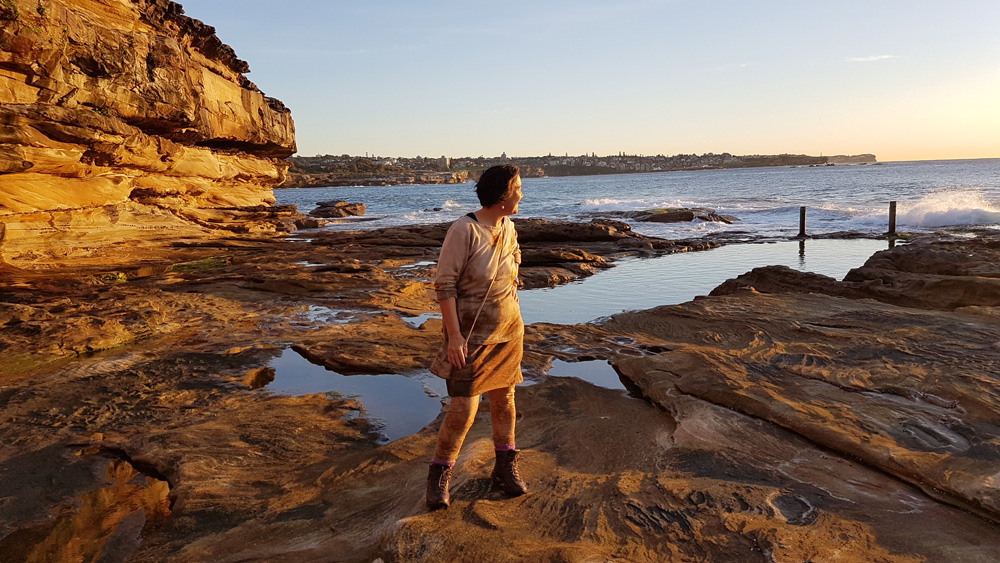This Art of Planetary Health dress has a good story to tell about how it came to be.
It was created in the field during the 2022 Painted River Project at Moree, run by the Bank Art Museum Moree and led by Dr Leo Robba from Western Sydney University, during a gathering of people at the intersection of ecology, farming, art and health.
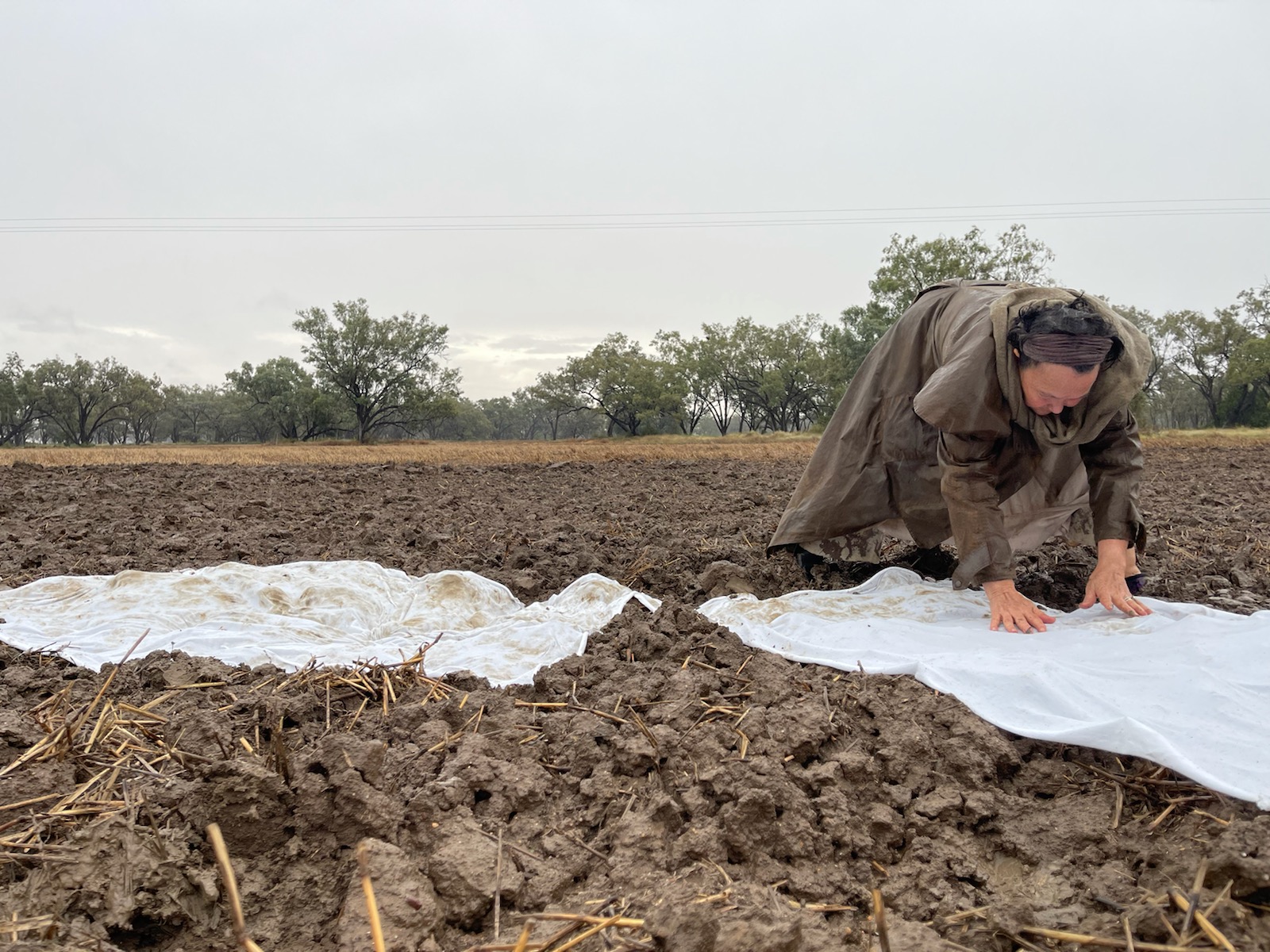
Jane Milburn imprints Good Earth Cotton with good earth. Photo by Lauren Marer
It is handmade from carbon-positive, sustainable, traceable, high-quality Good Earth Cotton grown at Keytah farm from seed modified to resist insect attack and under irrigation to enable resource-use efficiencies.
Although the cotton used in this dress had travelled offshore to be spun and turned into fabric, I imprinted it with the good earth on which it was grown before adding marks and fabric paint.
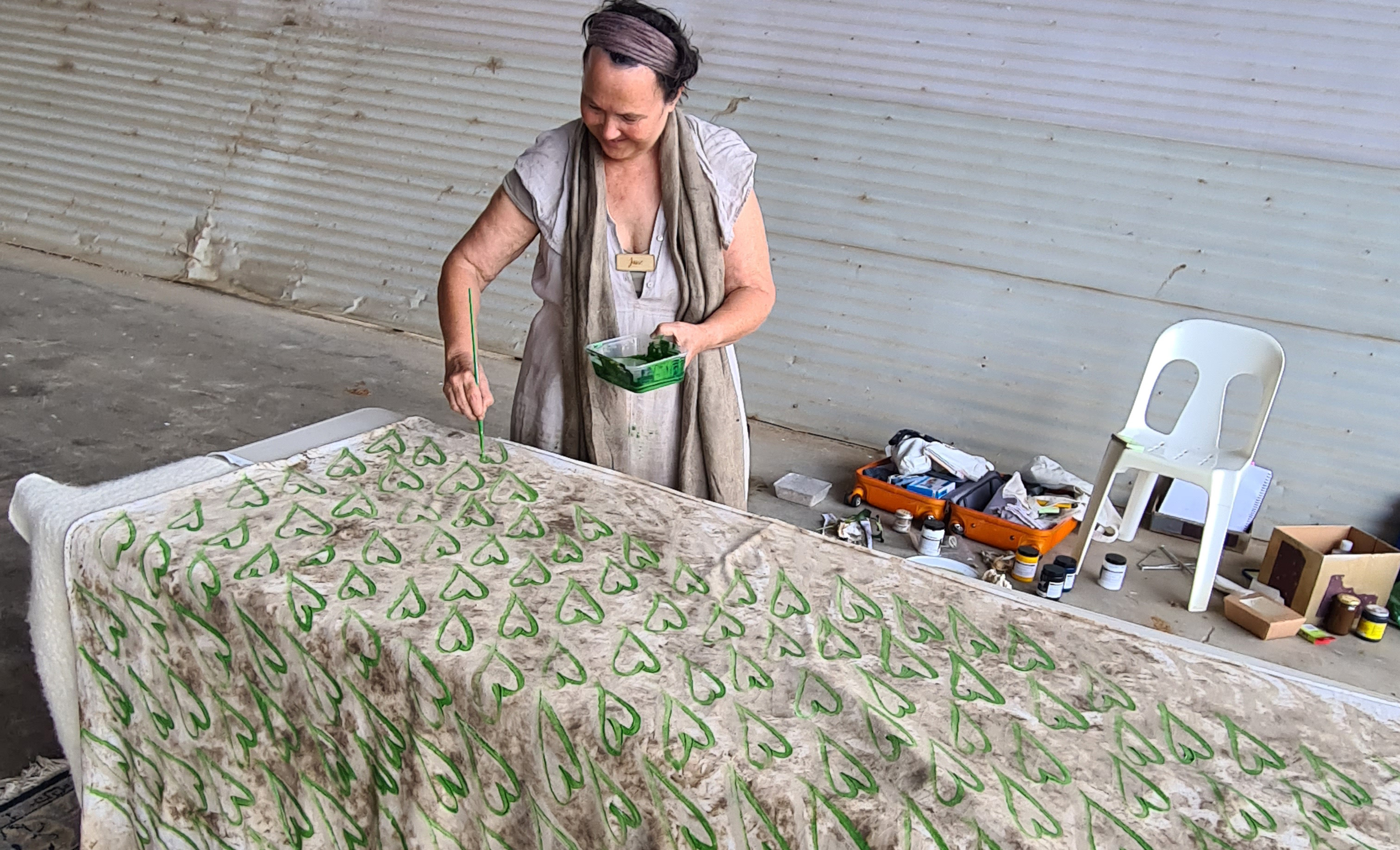
Adding colour and linear design elements to the fabric
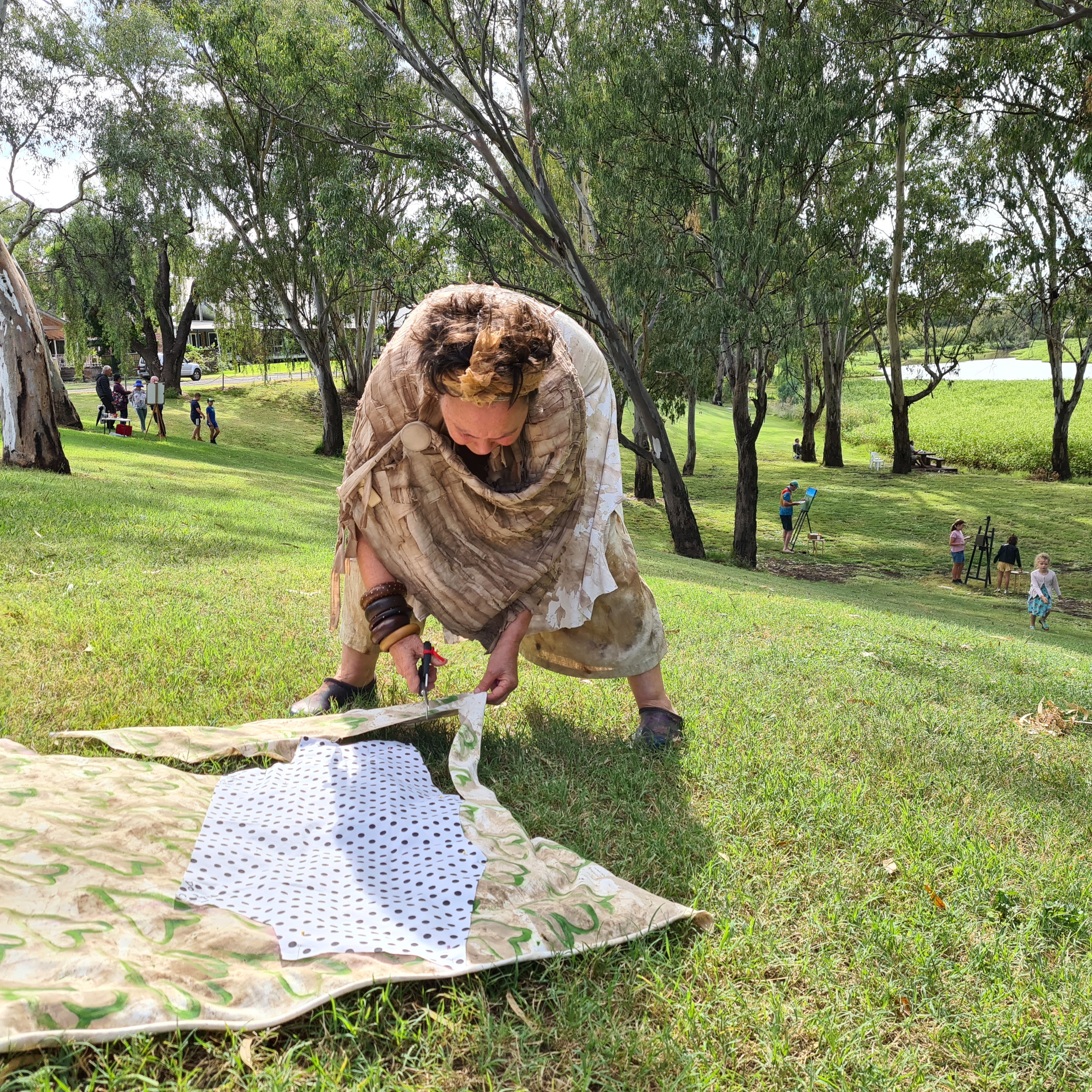
Cutting out the dress on the banks of the Mehi River in Moree as part of the making process
The fabric was then cut and stitched it into a dress on the banks of the Mehi River in between conversations about cotton and slow fashion. There is nothing like putting our own energy into making clothes to truly appreciate the time, skills and resources that go into those we buy.
This project was the subject of a feature story in The Guardian by Lauren Marer
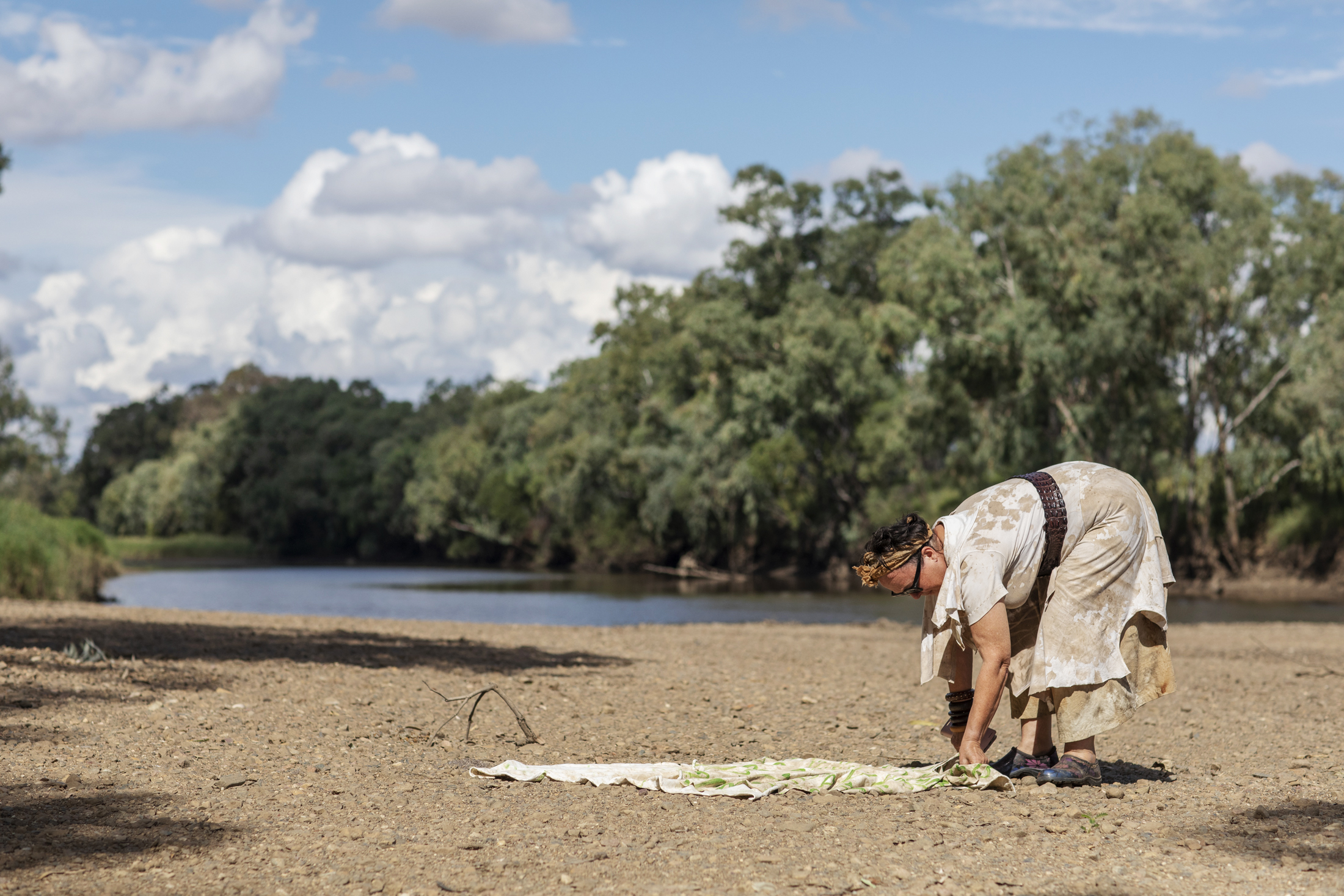
Pinning the seams on the river bed for final stitching of side seams. Photo by Sally Tsoutas
